Books by Alma Piñeyro-Nelson

Mexico is the center of origin of maize and one of the phenomena that imperil maize conservation ... more Mexico is the center of origin of maize and one of the phenomena that imperil maize conservation is transgene presence. Although previous studies have documented transgene presence in Mexican landraces, to date there is no countrywide transgene monitoring protocol, nor systematic analyses assessing which factors could be related with transgene presence and dispersal. In this work, we propose a geographically representative sampling protocol and present empirical data from three sampled states: Mexico City, Oaxaca and Chiapas. To further investigate which environmental and social variables could be associated with transgene presence, we carried out a data mining approach. To assess transgene presence in collected maize samples, we used Real-Time PCR, finding that transgenes were widely distributed across sampled localities: 33% of the localities in Chiapas, 25% in Mexico City and 11% in Oaxaca. The data mining approach allowed us to identify state-specific spatial associations in Chiapas and Oaxaca. In Chiapas, a higher probability of transgene presence appeared related to the coexistence of industrialized maize agriculture, while in Oaxaca it was related with seed exchange. We discuss the importance of implementing a national biomonitoring protocol to increase our understanding of the sources that enable transgene presence and dispersal.
Libro multiautorado donde expertos en diferentes áreas del conocimiento en torno al maíz como obj... more Libro multiautorado donde expertos en diferentes áreas del conocimiento en torno al maíz como objeto biológico, económico y cultural, reflexionan en torno a los riesgos e incertidumbres de la introducción de maíz transgénico en México.
Coordinado por Elena Álvarez-Buylla y Alma Piñeyro Nelson
Este libro conmemora 40 años de la creación del programa de Ciencia y Sociedad en la Facultad de ... more Este libro conmemora 40 años de la creación del programa de Ciencia y Sociedad en la Facultad de Ciencias de la UNAM. Contiene un capítulo reflexivo sobre dicha historia y tres secciones sobre la naturaleza humana, las relaciones humano-medioambiente y, finalmente, estudios de ciencia, tecnología y sociedad.
Papers by Alma Piñeyro-Nelson
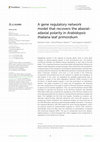
Frontiers in ecology and evolution, Feb 7, 2024
Megaphylls, present in the majority of vascular plants, show in many plant lineages an abaxial-ad... more Megaphylls, present in the majority of vascular plants, show in many plant lineages an abaxial-adaxial polarity in their dorsoventral axis. This polarity commonly translates into different tissues developing on each side of the leaf blade. This is important because it promotes better photosynthetic efficiency as related to light absorption and gas exchange. Many researchers have studied the molecular bases of the emergence of leaf abaxial-adaxial polarity, showing that it is produced by the interaction and differential expression of particular genes and other molecules. However, until now, it is still unclear if the molecular components documented thus far are sufficient to explain the emergence of leaf polarity. In this work, we integrated the available experimental data to construct a graph of the Gene Regulatory Network (GRN) involved in the formation of abaxial-adaxial polarity in the leaf primordium of Arabidopsis thaliana. This graph consisted of 21 nodes and 47 regulations. We extracted the main components of the graph to obtain a Minimum Network consisting of six genes and 22 possible regulations. Then, we used the Boolean network (BN) formalism to describe the dynamics of this Minimum Network. We identified 1905 distinct BNs that comprised the regulations of the Minimum Network and exclusively generated the two attractors representing the abaxial and adaxial cell types. This highlights the fact that most graphs, including our network, can describe experimentally observed behaviors with many BN dynamics. By performing mutant simulations and robustness analysis, we found that two of the 1905 BNs better reproduce experimentally available information. To produce the expected attractors, both BNs predict the same missing regulations, which we propose should be experimentally analyzed to confirm their existence. Interestingly, these two BNs have low robustness to perturbations compared with previously analyzed GRNs. This was an unexpected result since abaxialadaxial polarity is a robust biological trait, which suggests more components or regulations of the network are missing.
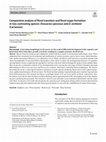
Plant Reproduction, Jan 8, 2024
Key message Contrasting morphologies in Disocactus are the result of differential development of ... more Key message Contrasting morphologies in Disocactus are the result of differential development of the vegetative and floral tissue where intercalary growth is involved, resulting in a complex structure, the floral axis. Abstract Species from the Cactaceae bear adaptations related with their growth in environments under hydric stress. These adaptations have translated into the reduction and modification of various structures such as leaves, stems, lateral branches, roots and the structuring of flowers in a so-called flower-shoot. While cacti flowers and fruits have a consistent structure with showy hermaphrodite or unisexual flowers that produce a fruit called cactidium, the developmental dynamics of vegetative and reproductive tissues comprising the reproductive unit have only been inferred through the analysis of pre-anthetic buds. Here we present a comparative analysis of two developmental series covering the early stages of flower formation and organ differentiation in Disocactus speciosus and Disocactus eichlamii, which have contrasting floral morphologies. We observe that within the areole, a shoot apical meristem commences to grow upward, producing lateral leaves with a spiral arrangement, rapidly transitioning to a floral meristem. The floral meristem produces tepal primordia and a staminal ring meristem from which numerous or few stamens develop in a centrifugal manner in D. speciosus and D. eichlamii, respectively. Also, the inferior ovary derives from the floral meristem flattening and an upward growth of the surrounding tissue of the underlying stem, producing the pericarpel. This structure is novel to cacti and lacks a clear anatomical delimitation with the carpel wall. Here, we present a first study that documents the early processes taking place during initial meristem determination related to pericarpel development and early floral organ formation in cacti until the establishment of mature floral organs.
Faculty Opinions – Post-Publication Peer Review of the Biomedical Literature, Dec 10, 2017
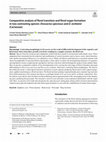
Plant Reproduction, 2024
Key message Contrasting morphologies in Disocactus are the result of differential development of ... more Key message Contrasting morphologies in Disocactus are the result of differential development of the vegetative and floral tissue where intercalary growth is involved, resulting in a complex structure, the floral axis. Abstract Species from the Cactaceae bear adaptations related with their growth in environments under hydric stress. These adaptations have translated into the reduction and modification of various structures such as leaves, stems, lateral branches, roots and the structuring of flowers in a so-called flower-shoot. While cacti flowers and fruits have a consistent structure with showy hermaphrodite or unisexual flowers that produce a fruit called cactidium, the developmental dynamics of vegetative and reproductive tissues comprising the reproductive unit have only been inferred through the analysis of pre-anthetic buds. Here we present a comparative analysis of two developmental series covering the early stages of flower formation and organ differentiation in Disocactus speciosus and Disocactus eichlamii, which have contrasting floral morphologies. We observe that within the areole, a shoot apical meristem commences to grow upward, producing lateral leaves with a spiral arrangement, rapidly transitioning to a floral meristem. The floral meristem produces tepal primordia and a staminal ring meristem from which numerous or few stamens develop in a centrifugal manner in D. speciosus and D. eichlamii, respectively. Also, the inferior ovary derives from the floral meristem flattening and an upward growth of the surrounding tissue of the underlying stem, producing the pericarpel. This structure is novel to cacti and lacks a clear anatomical delimitation with the carpel wall. Here, we present a first study that documents the early processes taking place during initial meristem determination related to pericarpel development and early floral organ formation in cacti until the establishment of mature floral organs.

Lacandonia schismatica (Triuridaceae) is the only known angiosperm species with flowers composed ... more Lacandonia schismatica (Triuridaceae) is the only known angiosperm species with flowers composed of central stamens surrounded by carpels. If the reproductive axes of this species are interpreted as heterotopic flowers, crucial questions on the evolution of morphological novelties arise, such as: a) is this phenotype fixed or whether intermediate floral variants within L. schismatica populations exist, and b) what is the nature and number of molecular alterations involved in such a morphological saltation. Furthermore, the temporal progression of floral organ formation in this taxon is unaltered with respect to the great majority of angiosperms (perianth, then stamens and finally carpels). This suggests that the regulatory mechanisms underlying the spatial and temporal morphogenetic patterns of flower development can be altered independently of each other. Through developmental genetic studies, the underlying molecular components involved in the unique position of sexual organs in L. schismatica have started to be unravelled. However, studies on floral meristem identity genes, including B-function genes and their regulators (LFY, UFO and SEP) will be important to address the molecular basis of any regulatory alterations. In this contribution we summarize the developmental, systematic and structural data that nurture the on going debate concerning the nature of the Triurid reproductive structures, considered either true flowers (euanthia) or compressed inflorescences (pseudanthia). Finally, we discuss the theoretical approaches that are helping us to understand developmental constraints of the ABC gene regulatory network, and how such theoretical analyses could help explain the arrangement of L. schismatica flowers.
Revista Fitotecnia Mexicana, Sep 15, 2022
Material suplementario III. Tipo de secuencias transgénicas detectadas y frecuencia absoluta en d... more Material suplementario III. Tipo de secuencias transgénicas detectadas y frecuencia absoluta en dos municipios de la Meseta Purépecha, Michoacán, México. A) presencia de secuencias transgénicas en cinco zonas de los municipios de Uruapan y Paracho, B) presencia de secuencias transgénicas en siete sub-zonas de la zona de Uruapan.
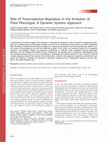
Developmental Dynamics, Apr 8, 2015
A growing body of evidence suggests that alterations in transcriptional regulation of genes invol... more A growing body of evidence suggests that alterations in transcriptional regulation of genes involved in modulating development are an important part of phenotypic evolution, and this can be documented among species and within populations. While the effects of differential transcriptional regulation in organismal development have been preferentially studied in animal systems, this phenomenon has also been addressed in plants. In this review, we summarize evidence for cis-regulatory mutations, trans-regulatory changes and epigenetic modifications as molecular events underlying important phenotypic alterations, and thus shaping the evolution of plant development. We postulate that a mechanistic understanding of why such molecular alterations have a key role in development, morphology and evolution will have to rely on dynamic models of complex regulatory networks that consider the concerted action of genetic and nongenetic components, and that also incorporate the restrictions underlying the genotype to phenotype mapping process.

Journal of Plant Biology, Apr 19, 2021
Background: The ower of Hedychium coronarium possesses highly specialized oral organs: a synsepal... more Background: The ower of Hedychium coronarium possesses highly specialized oral organs: a synsepalous calyx, petaloid staminodes and a labellum. The formation of these organs is controlled by two gene categories: oral organ identity genes and organ boundary genes, which may function individually or jointly during ower development. Although the oral organogenesis of H. coronarium has been studied at the morphological level, the underlying molecular mechanisms involved in its oral development still remain poorly understood. In addition, previous works analyzing the role of MADS-box genes in controlling oral organ speci cation in some Zingiberaceae did not address the molecular mechanisms involved in the formation of particular organ morphologies that emerge later in ower development, such as the synsepalous calyx formed through intercalary growth of adjacent sepals.
Plants, Nov 18, 2022
This article is an open access article distributed under the terms and conditions of the Creative... more This article is an open access article distributed under the terms and conditions of the Creative Commons Attribution (CC BY
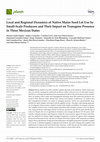
Plants
Mexico harbors over 50% of maize’s genetic diversity in the Americas. Native maize varieties are ... more Mexico harbors over 50% of maize’s genetic diversity in the Americas. Native maize varieties are actively managed by small-scale producers within a diverse array of cultivation systems. Seed lot use, exchange and admixture has consequences for the in situ conservation of such varieties. Here we analyze native maize seed management dynamics from 906 small-scale producers surveyed in three Mexican states: Mexico City, Oaxaca and Chiapas. Furthermore, we analyze how their management practices can relate to transgene presence, which was experimentally documented for maize samples associated with the applied surveys. Through a data mining approach, we investigated which practices might be related with a higher probability of transgene presence. The variables found to have a strong spatial association with transgene presence were: for Mexico City, maize producers with larger parcels; for Oaxaca, producer’s age (43–46 years) and the sale of seed; for Chiapas, the use of agricultural machin...
Universidad Nacional Autónoma de México eBooks, 2016
Haplotypes description and frequencies of haplotypes per populatio
Agroecology and Sustainable Food Systems
Ciencia Y Desarrollo, 2011



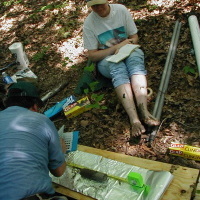



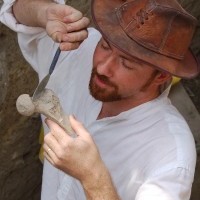


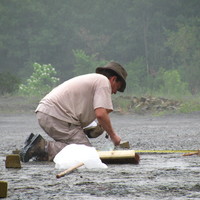
Uploads
Books by Alma Piñeyro-Nelson
Coordinado por Elena Álvarez-Buylla y Alma Piñeyro Nelson
Papers by Alma Piñeyro-Nelson
Coordinado por Elena Álvarez-Buylla y Alma Piñeyro Nelson